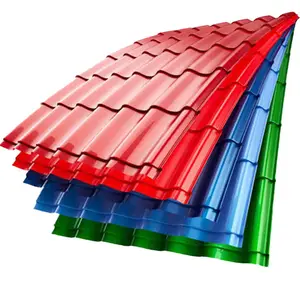
Factory Direct Supply 30 32 Gauge RAL5052 9012 Corrugated Color Coated Roofing Sheet For Construction





















Torch down roofing, which is also known as bitumen roofing, is a type of roofing material commonly used for low-slope or flat roofs. Essentially, it consists of multiple layers of bitumen (a sticky, black, tar-like substance) and fiberglass or polyester reinforcement. These layers are then heated with a torch to melt the bitumen, allowing it to bond with the underlying layers and create a waterproof membrane. Torch down roofing ensures durability and resistance to UV rays, weathering, and damage from foot traffic. It is also relatively easy to install and repair compared to other roofing materials.
Torch down roofing requires various equipment to complete a standard roofing job. For example, a roofing torch is a propane torch used to heat the bitumen and melt it onto the roof surface. It is important that it comes with a flame control valve and a safety trigger to prevent accidental ignition. Moreover, the propane tank is needed to provide fuel for the torch and should be properly connected and secured during use. Personal protective equipment (PPE) is essential for safety during torch down roofing. This usually includes flame-resistant clothing, gloves, goggles, and a respirator to protect against fumes for applying roofing felt.
The torch down roofing membrane is an essential material used for the installation that comes in rolls and is typically made of modified bitumen with a fiberglass or polyester reinforcement. Other key tools for torch down roofing, include roofing knives, scissors, nails, adhesives, and primer.
There are several benefits to torch down roofing. First, torch down roofing provides durability and a long lifespan as it ensures resistance to UV rays, weathering, and damage from foot traffic. The multiple layers of bitumen and fiberglass or polyester reinforcement create a waterproof membrane that effectively protects the underlying structure from leaks and water damage. For waterproof roofing, this is the preferred option.
Torch down roofing provides flexibility, allowing the finished job to accommodate the natural movements and expansions of the roof and building overall without cracking or splitting. Roofing can be complex, which is why easy installation and repair is essential. The rolls of roofing membrane can be quickly and efficiently applied using a torch, and repairs can be easily done by heating the damaged area and applying new bitumen. Torch down roofing can be used on various types of roofs, including flat roofs, low-slope roofs, and roofs with irregular shapes or contours featured on residential and commercial buildings.